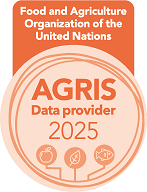Metabolic and endocrine profiles, productive and reproductive parameters in dairy cows in grazing conditions
Keywords:
Lactation, Body condition, Dairy cows, CalvingAbstract
This study investigated the effect of lactation number and body condition at calving on body condition (BCS) and live weight, metabolic and endocrine profiles, and reproductive and productive parameters in 42 Holando cows (21 primiparous and 21 multiparous) from 2 months prior to calving to 3 months after calving. Body condition and live weight were determined every 15 days. Blood samples were taken twice a week during pre-labor and 3 times a week after calving. Plasma levels of total protein, albumin, urea, non-esterified fatty acids (NEFA), ß-hydroxybutyrates (BHB), cholesterol, aspartate amino transferase, calcium, phosphorus and magnesium were determined every 10 days during the experimental period. The hormones insulin, insulin-like growth factor I (IGF-I), leptin, thyroxine and 3.3',5 triiodothyroinine were determined every 10 days from one month before to two months after delivery. Progesterone was determined three times per week after delivery. The animals were classified according to category (primiparous vs. multiparous) and body condition at delivery "3 or ~ 3, scale 1-5). Primiparous cows produced less than 1 milk. This category also had lower levels of total protein, albumin, calcium and magnesium. Primiparous cows had higher increases in NEFA and samples with BHB values indicative of subclinical ketosis during this period. This was consistent with a lower body condition reflecting a more severe negative energy balance. Multiparous cows showed higher levels of thyroid hormones and IGF-1, while cows with ~ 3 BCS at calving showed higher concentrations of leptin and IGF-I. Hormone levels were decreased during the first week postpartum …











